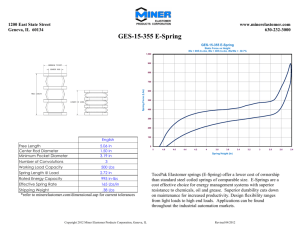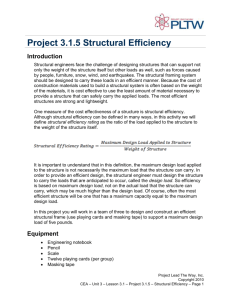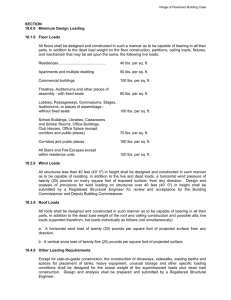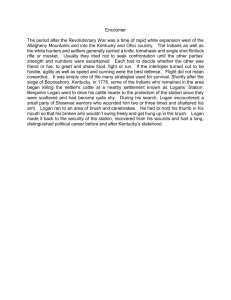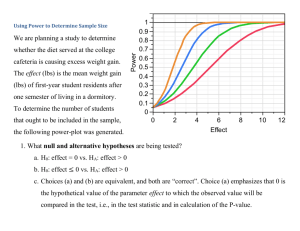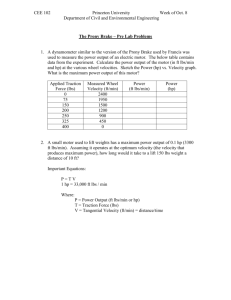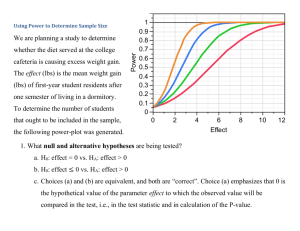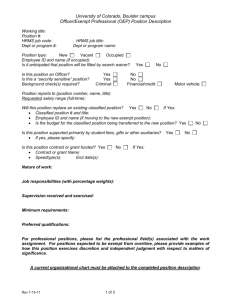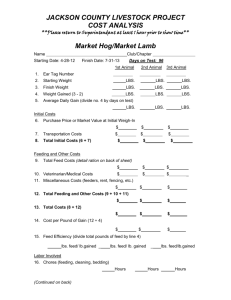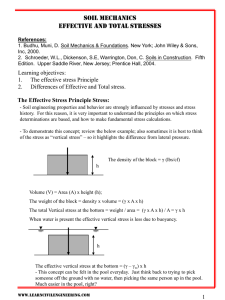File
advertisement
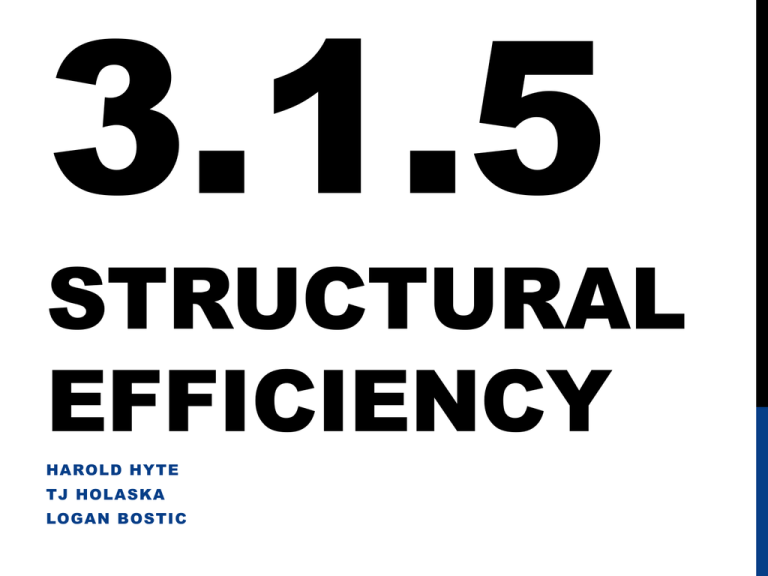
3.1.5 STRUCTURAL EFFICIENCY HAROLD HYTE TJ HOLASKA LOGAN BOSTIC PROJECT INTRODUCTION Structural engineers face the challenge of designing structures that can support not only the weight of the structure itself but other loads as well, such as forces caused by people, furniture, snow, wind, and earthquakes. The structural framing system should be designed to carry these loads in an efficient manner. Because the cost of construction materials used to build a structural system is often based on the weight of the materials, it is cost effective to use the least amount of material necessary to provide a structure that can safely carry the applied loads. The most efficient structures are strong and lightweight. One measure of the cost effectiveness of a structure is structural efficiency. Although structural efficiency can be defined in many ways, in this activity we will define structural efficiency rating as the ratio of the load applied to the structure to the weight of the structure itself. Structural efficiency = 41.23% 2lbs / .048501lbs STRUCTURE IMAGE This was our original structure. After this we decided to put the three struts in a conical shape to increase it’s strength. IN THIS PROJECT YOU WILL WORK IN A TEAM OF THREE TO DESIGN AND CONSTRUCT AN EFFICIENT STRUCTURAL FRAME (USE PLAYING CARDS AND MASKING TAPE) TO SUPPORT A MAXIMUM DESIGN LOAD OF FIVE POUNDS. PROJECT OBJECTIVE COMPETITION RESULTS Team Weight of Structure (lbs) Load Supported (lbs) Structural Efficiency Knea Carsen .0485017 5 103.05% Lee Regan .061729 8 129.6% Nathan Justin Chandler .061729 6½ Harold TJ Logan B. .048501 2 41.23% Logan H. Aaron Noah .044092 3 68.09% 105.29% Our structure was able to hold .048501 lbs and supported 2 lbs of weight. This gives it a structural efficiency of 41.25%. Structural efficiency is calculated as load applied / weight of structure. PROJECT CONCLUSION 1.What factors could affect the choice of materials for the structural frame of a building? The purpose of the building means it will have a different load it is required to support, and as such sometimes an extremely strong material is not required. The strength of whatever material is going to be used can also effect the material selection. 2. Is it advisable to compare the Structural Efficiency Rating for two different proposed framing systems for a building if one system uses structural steel framing and the other uses cast-in-place concrete? Why or why not? If not, what would be a better comparison to determine efficiency? Yes, because while they would have a different weight and would also be able to support a different amount of load, you’re comparing their efficiency to support the load for the amount of weight they have, so it is exactly what you want. 3.Why would a structural engineer be more interested in the Structural Efficiency Rating using the maximum design load than the efficiency determined by using the maximum load capacity of the structure? The maximum design load is used supposed to be a safety precaution to prevent the structure being destroyed under the maximum load.
